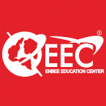Magic of this group or How to arrange a class by means of “Round Table”
The course in the shape of a “round table” is most conveniently performed during the phase of generalization and consolidation associated with material, because this type enables you to look at topic under study into the system that is general of about them, to show interdisciplinary connections. In addition, the concept “round table” helps link theory and training, to show the value that is practical of acquired knowledge, skills and practices.
A table that is round a kind of organizing a discussion of an interest in which a few points of view are initially set. The goal of the round table is to recognize contradictions, compare various points of view and choose roles and solutions being acceptable to any or all participants.
Step one. Picking a subject for a round table
The absolute most difficult stage of planning for the concept may be the range of this issue:
- First, this issue should initially assume the existence of various points of look at the exact same question, that is, be multivariate.
- Secondly, this issue must be well examined.
- Third, its desirable that this issue may be tied to the current, every day life, this is certainly, it must be appropriate.
For example, this issue in geography “Shape for the planet” can never be useful for a table that is round in whatever way. However the variation “Historical notions in regards to the form of the Earth” is fairly suitable, because it enables to put ahead various assumptions, to submit arguments in support of this or that variation, to correlate with all the state that is present of.
Frequently, lessons in the shape of a “round table” are conducted in humanitarian subjects (literary works, history, social studies). Even though this form may be used when you look at the lessons of math, chemistry, physics.
Examples of topics for circular table in various subjects
- Mathematics. For example, “Methods of multiplication of figures: conventional and uncommon”;
- Chemistry. The classification of metal ores, the production of steel, cast iron, the environmental impact of metal eliteessaywriters™ processing, etc for example, the topic “Metallurgy”, where different groups can be given different tasks: what is metallurgy.
- Physics. Theme “Alternative energy sources”.
Phase 2. planning pupils for participation in a round dining table
Spontaneously conduct of these a concept is impossible. Consequently, it is suggested to advise pupils in advance, to speak about the concepts of organizing a discussion, in regards to the assessment system. Consultations are both combined team and specific (at the demand of pupils).
Simple tips to arrange a roundtable class in college? It’s very important to go over the after rules in planning:
- Regulations (on time).
- Mutual respect.
- Inadmissibility of “change into the individual.”
- Speak one after the other.
- Usually do not interrupt the presenter.
- Earnestly engage, etc.
These rules may be formulated because of the kiddies on their own, therefore the instructor can suggest also.
Assessment rules are laconism, reasoning, precision of this statement. It really is desirable to create most of the rules on split placards (panels) so they come in front for the eyes through the “round table”.

Leave A Comment